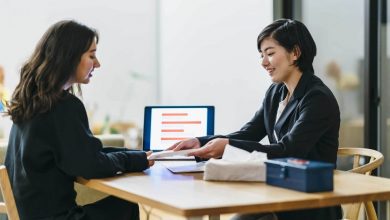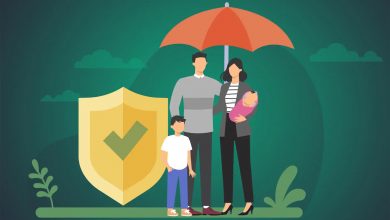10 Strategies for Becoming Debt-Free

Getting out of debt is not easy. Sometimes, it takes everything you have to keep up with monthly bills and save for a rainy day, let alone pay your minimum monthly credit card payments.
Fortunately, there are plenty of ways to get out of debt that won’t make you miserable. These are some of the best strategies for becoming debt-free.
How debt can negatively affect your life
Being in debt can make it harder to qualify for other loans. For example, if you want to buy a home, most lenders require you to have a debt-to-income (DTI) ratio of 43 percent or less, including future mortgage payments.
The DTI ratio is calculated by adding your current monthly debt payments and dividing them by your monthly gross income. Let’s say you have a student loan payment of $300, a car loan payment of $500, and a minimum credit card payment of $200. Your gross monthly salary is $3,750, which makes your DTI 26.67 percent.
In this case, the maximum mortgage payment you would qualify for is $612.50. Depending on your location, it could be nearly impossible to find a home in that price range.
If your DTI is already over 43 percent without a mortgage payment, you may find it impossible to qualify for a mortgage. Having too much debt can also make it harder to save for retirement, your child’s college education, or other goals.
Also, if you work in law enforcement, financial services, or the military, your employer may run a credit check when you apply. You may be turned down if you have too much debt because a vulnerable financial situation puts you at a statistically higher risk of taking bribes.
Organize all your debts and bills
Before you can devise a debt settlement strategy, you need to compile a list of all your current bills and loans. Review your bank accounts and credit card statements for the last six months and write down all loans, bills, and other recurring fixed expenses.
Your list should include the monthly payment, total balance, interest rate, term, and any other relevant details. For example, you should note if any of the loans are currently in deferment or on a special payment plan.
To make sure you haven’t missed anything, check your credit report to see all current loans and lines of credit. You can check your credit report for free once a week through AnnualCreditReport.com until April 20, 2022. After that, it’s free once a year.
Be sure to check your credit report from all three credit bureaus. Some lenders don’t report credit activity with all three, so if you only check one or two, you may be missing important information.
Strategies for Getting Out of Debt
If you’re ready to get out of debt, start with the following steps:
1. Create a budget
A budget will help you make better decisions about your money and give you an idea of how much you can allocate to paying off your debt each month. Don’t attempt to manage your expenses mentally; putting the numbers on paper enables you to see the bigger picture without relying on your memory. Your budget can also assist you in identifying areas where you can free up money to pay off your debt.
2. Distinguish between bankruptcy and overspending
Are you using the term “broke” to describe the situation after you’ve spent all your money on non-essential items rather than bills? If so, you’re not truly broke. You can make some changes in your spending habits to create additional space in your budget.
If you genuinely lack funds, refrain from making it worse by making poor decisions, such as spending on unnecessary items.
3. Prepare a plan
Paying off your debt should always commence with a plan, regardless of your financial situation, even if you can’t start immediately. Begin by listing your debts, including the balance and interest rate.
Prioritize your debts by determining the order in which you want to pay them off, such as tackling the debt with the highest interest rate first, the lowest balance first, or another order.
The plan is to allocate as much as you can to one account while making minimum payments on the others. Ideally, you’ll find ways to free up more cash in your budget (more on that below), but initially, work with what you have.
4. Stop creating debt
You will never become debt-free if you continuously increase your balances. Keep your credit cards in a drawer or even freeze them in a block of ice. Avoid closing accounts, as it can harm your credit score. Refrain from applying for more loans to prevent accumulating additional debt.
New debt increases your required monthly payments, adding more pressure to your monthly income. It may be challenging to live without credit cards when you have limited funds, but if you genuinely want to get out of debt, it’s crucial to find a way to live within your means.
5. Look for ways to reduce your expenses
Don’t make guesses. Examine your monthly bank statements to identify where you spend money each month. For each purchase, seriously consider whether it’s an expense you can do without. Remember, you’re cutting costs for a reason – to become debt-free.
While you may need to make some temporary sacrifices, you can reintroduce certain expenses once you’ve cleared your debt if you determine they are worth it.
6. Increase your income
Increasing your income accomplishes two goals. Firstly, you won’t have to rely on your credit cards to make ends meet. Secondly, you’ll have more money available to pay off your debt. You can boost your income by taking on a second job, engaging in freelance work, selling items on eBay or Craigslist, monetizing a hobby, accepting odd jobs, or starting a small business.
7. Ask your creditors for a lower interest rate
A high interest rate makes it more challenging to pay off your debt, as a greater portion of your monthly payment goes toward interest charges. Reducing your interest rate decreases the monthly interest you pay and allows you to pay off your debt more quickly.
A good credit score and a positive payment history provide you with more leverage to negotiate a lower interest rate. If your credit card issuer remains uncooperative, consider transferring your balance to a credit card with a lower interest rate. Taking advantage of a 0% balance transfer offer is even better.
8. Pay on time and avoid fees
Late payments impede your debt payoff progress. They result in double payments the following month and incur late fees, funds that could have been used to reduce your balance. Additionally, two consecutive late credit card payments trigger the penalty rate, further hindering your debt repayment.
9. Consider consumer credit counseling
A credit counseling agency can collaborate with you to review your finances and formulate a budget that may encompass monthly debt payments. If you can’t afford your debt payments, the credit counselor will attempt to establish a debt management plan (DMP) with your creditors. The DMP often includes reduced monthly payments to your creditors, and you may make a monthly payment to your credit counselor, who will then distribute the payments to your creditors.
If your financial situation and debt repayment capacity are more complex, you might contemplate seeking assistance from a debt relief program. Pursuing debt settlement should be a last resort, as it involves discontinuing payments and working with a company that holds the money in escrow while you negotiate with your creditors to reach an agreement, a process that can take up to four years. Withholding payments from your creditors can significantly damage your credit score.
10. Take one step at a time
Viewing your overall debt picture can be overwhelming, but remember that you won’t resolve it all at once. By focusing on one debt at a time, your debt repayment process will be more effective. Track your progress, celebrate your achievements, and continue working until your debt is entirely paid off.












